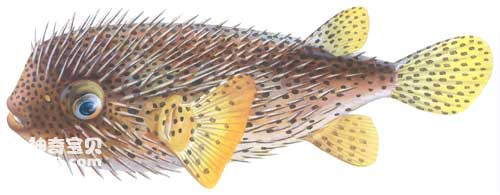Secondary defense behavior mainly manifests itself in 5 forms, including:
1. Retreat: Retreat is the most common and basic secondary defense behavior. The first reaction of any fish when encountering danger is to retreat. Some small fish swim into rock gaps and some into aquatic plants. Seahorses and poplar fish stay among the aquatic plants. In order to avoid predators, the single-horned puffer fish often hides among eelgrass and seaweed. It puts its head down, its mouth close to the substrate, and its fins move in the water. Its slender body, combined with the waving fins and green markings, is misleading. Think of a frond of kelp or a blade of eelgrass. Although this defense method of retreat is effective, it often affects the progress of other activities, such as feeding. At the same time, it is impossible to know whether the predator has left and whether the danger has been eliminated.

2. Escape: including fast swimming and jumping out of the water. Escape routes may be straight or zigzag. Flying fish will swim quickly in groups when encountering enemies, and use the speed and momentum of swimming to break out of the water and glide. Silver carp and other fish will jump out of the water when in danger.
3. Intimidation: Individuals who are not able to escape quickly or are in danger of being caught sometimes adopt intimidating postures or actions. For example, when the spiny puffer fish encounters danger, in addition to swallowing air to expand its body, all the spines on its body stand up to form a large spiny ball to scare away the enemy.

4. Suspended death: Many predators only attack moving prey, so immobile prey can often escape. For example, a pufferfish first feigns death and then suddenly escapes after a while.
5. Distract the attacker's attention: Some fish have a large round eye pattern on the upper back of the body, causing the enemy to mistake the tail for the head, resulting in misjudgment of the attack direction. Some butterfly fish have a black band running through the eyes on their head and a large eye spot on the back of the body. It is often difficult to distinguish the real eyes clearly, but the clear and obvious large round spot closely resembles the eyes. This kind of fish often moves with its tail. It moves first and swims slowly backwards for a short distance. When frightened, it moves head first and swims forward quickly. Often the enemy mistakenly mistakes the tail for the head and thus misjudges the direction of the butterfly fish's movement.
animal tags:
We created this article in conjunction with AI technology, then made sure it was fact-checked and edited by a Animals Top editor.